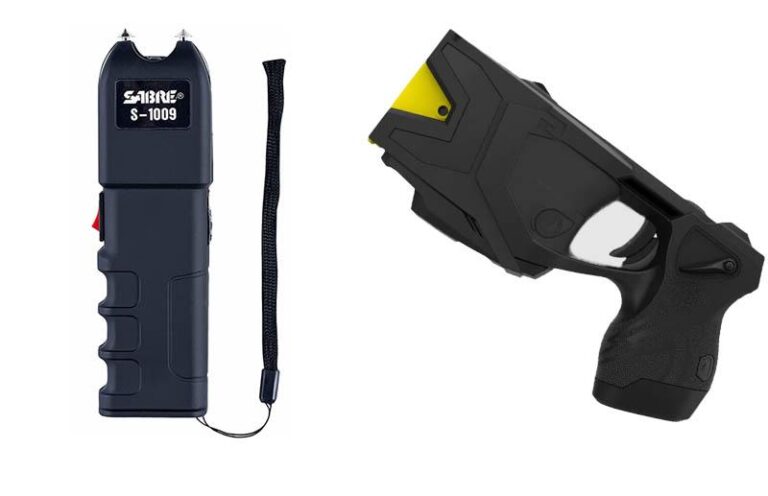Table of Contents
- Understanding the Legal Definitions and Classifications of Stun Guns
- State-by-State Regulations and Permit Requirements for Concealed Carry
- Best Practices for Safe and Responsible Use in Public Spaces
- Navigating Legal Risks and Ensuring Compliance Through Documentation
- To Conclude
Understanding the Legal Definitions and Classifications of Stun Guns
Stun guns are often categorized under different legal definitions depending on jurisdiction, which significantly impacts their usage, possession, and carry regulations. In many states, stun guns fall under the umbrella term of “electronic control devices,” while others define them separately as less-lethal weapons. These classifications influence whether a carry permit is required, the locations where they can be legally carried, and the age restrictions imposed on users. It is crucial to recognize that the definition extends beyond just the device itself and may include other related accessories, which could be subject to regulation as well.
Key points to consider when evaluating stun gun legality include:
- Device Classification: Determining if the stun gun is classified as a weapon or a self-defense tool influences carry laws.
- Permit Requirements: Some states mandate a concealed carry permit specifically for stun guns, while others permit carry without any license.
- Location Restrictions: Public buildings, schools, and government properties often have explicit prohibitions regardless of carry permits.
- Transport vs. Carry Laws: Transporting a stun gun in a vehicle may be treated differently from carrying it concealed on your person.
State-by-State Regulations and Permit Requirements for Concealed Carry
Regulations for carrying stun guns discreetly vary considerably across the United States, with each state imposing its own specific criteria on possession, transport, and use. While some states permit concealed carry without a permit, others require explicit authorization or prohibit stun guns in certain public venues altogether. Factors such as age restrictions, permissible locations, and exceptions for self-defense purpose are common points of divergence. For instance, states like Texas and Florida allow concealed stun guns with minimal restrictions, whereas others like Massachusetts have stringent prohibitions or licensing demands. Therefore, understanding the local legislation before carrying is critical to ensure compliance and avoid legal pitfalls.
Key considerations often include:
- Permit Necessity: Whether a concealed carry permit specific to stun guns is needed or if general self-defense weapon permits cover them.
- Restricted Areas: Areas such as schools, government buildings, and private properties may have explicit bans on stun guns.
- Age Requirements: Minimum age limits typically range from 18 to 21 years old depending on jurisdiction.
- Transport Rules: Regulations on how the device must be stored or carried during transit can vary.
Best Practices for Safe and Responsible Use in Public Spaces
When carrying a stun gun discreetly in public, it’s crucial to respect both legal boundaries and social norms. Always verify local regulations before carrying, since laws vary significantly between jurisdictions. Remember that stun guns should be used strictly for self-defense purposes and never as a tool for intimidation or aggression. Practice responsible behavior by keeping your device securely concealed but accessible in case of emergency, and make sure it is stored in a manner that prevents accidental discharge. Familiarize yourself with the operational functions through regular training so that you can confidently and safely handle the device when necessary.
Additionally, consider the environment you are in. Public spaces such as schools, government buildings, and airports often have strict prohibitions against carrying stun guns, regardless of concealment. Avoid drawing unnecessary attention, and never brandish the device openly unless it’s a clear threat to your safety. To reinforce responsible carry practices, establish a routine check of your stun gun’s battery life and maintenance. Here are a few quick tips to follow:
- Keep informed: Stay updated on changes in laws pertaining to stun guns in your area.
- Discreet carry: Use appropriate holsters or cases designed for concealment and quick access.
- Practice safety: Avoid mishandling the device to prevent accidental shocks.
- Respect private property: Comply with any posted bans or requests to not carry stun guns.
Navigating Legal Risks and Ensuring Compliance Through Documentation
To effectively manage the legal complexities associated with carrying stun guns concealed in public, dedicated documentation is indispensable. Proper legal documentation serves as a safeguard, outlining your right to possess and carry a stun gun according to state and local regulations. It’s crucial to keep records such as purchase receipts, permits, and certifications of completed training programs, when required, in a well-organized system. These documents can prove your compliance during encounters with law enforcement or legal scrutiny, helping to avoid misunderstandings that could escalate into costly legal battles.
Maintaining thorough documentation goes beyond personal records-it also involves staying informed and updated on any changes in legislation. Consider implementing the following best practices for robust compliance:
- Regularly review state and municipal stun gun laws to adapt documentation accordingly.
- Maintain a secure, easily accessible digital and physical archive of all legal paperwork and guidelines.
- Document all interactions with authorities related to the possession or use of the stun gun.
- Consult with legal professionals for periodic audits of your compliance status and documentation accuracy.
To Conclude
In conclusion, navigating the legal landscape surrounding the concealed carry of stun guns is crucial for responsible ownership and personal safety. Understanding the specific regulations in your state and local jurisdiction not only helps you stay compliant but also ensures that you’re prepared to protect yourself lawfully. Always stay informed about any changes in legislation and consider consulting legal experts if you’re unsure about the rules that apply to you. By doing so, you can confidently carry your stun gun while respecting the law and prioritizing public safety. Stay safe, stay informed, and carry responsibly.Check Our Other Blogs
- StunGun – Your Trusted Source for Stun Guns, Laws, and Self-Defense Tips
- PepperSprayLaws – Your Trusted Resource for Pepper Spray Information
- StunGunLaws – Your Trusted Guide to Stun Gun Legality and Safety





